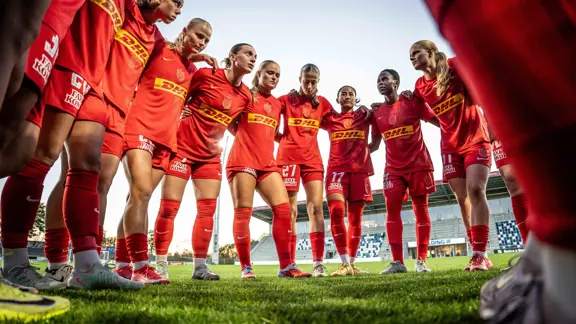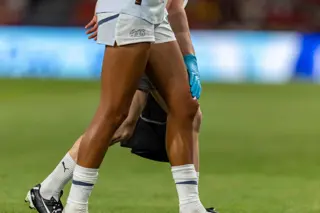News
New study reveals early signs of osteoarthritis in professional women’s footballers

- Osteoarthritis can start early, even in peak-condition athletes, according to a sub-study focused on 74 professional women’s footballers
- Research found knee surgeries carry long-term risks that can shorten careers, while ankles may need as much care as knees
- The sub-study was conducted as part of the Drake Football Study, a 10-year project tracking the physical and mental health of around 170 men’s and women’s footballers
New research from the Drake Football Study has shed light on an emerging health concern in women’s professional football: early signs of osteoarthritis (OA) in the lower limbs.
Published in the South African Journal of Sports Medicine (2025), the sub-study conducted by Dr D.A. Ramagole and colleagues is the first to clinically assess OA in active professional women’s players, revealing new insights about where and how it begins.
OA is a condition of the joints, often linked to ageing. It is a type of arthritis that happens when the cartilage that lines joints is worn down and bones rub against each other.
The study examined 74 professional women’s players (average age 25) from across Europe and Africa. Women’s players were clinically evaluated for hip, knee and ankle osteoarthritis, and completed detailed questionnaires about joint pain, function and past injuries or surgeries.
Despite the players’ young age and top fitness levels, clinical osteoarthritis was already present in several cases:
- Hip OA: 2.7%
- Knee OA: 5.0%
- Ankle OA: 8.0%
"While the overall prevalence was low, one finding stood out: the ankle emerged as the most affected joint, suggesting it may be a weak link in women’s football biomechanics," said Prof Dr Vincent Gouttebarge, FIFPRO’s Medical Director.
Prof Dr Vincent Gouttebarge is a former professional footballer who played 14 seasons in France and the Netherlands and is one of the project leads of the Drake Football Study.
"Unlike many previous studies that rely on imaging, this research used clinical criteria from NICE (UK National Institute for Health and Care Excellence) to detect OA based on pain, stiffness and loss of motion," he said.
"One of the most important takeaways from this sub-study is that pain shows up before scans reveal damage. It means OA isn’t just something that happens after retirement or when X-rays show joint damage – it can begin silently during an athlete’s career."

Knee injuries and surgeries strongly linked to OA
The study also confirmed what many athletes suspect: major knee injuries and surgeries increase the risk of OA, even at a young age.
Players who had suffered severe knee injuries were significantly more likely to develop OA. Those who had undergone knee surgery were nine times more likely to have OA than those who had not.
"This link was not seen in the hips or ankles, suggesting that the knee remains the most vulnerable joint for long-term joint health, especially following ligament or meniscus damage," said Prof Dr Gouttebarge.

Ankles deserve more focus in injury prevention
While knees are a classic concern in football medicine, this sub-study identified the ankle as the joint most affected by early clinical OA. Ankle OA was significantly associated with pain and reduced function, hinting that repeated sprains, contact injuries and overuse may lead to early degenerative changes.
This is the first study to highlight ankle OA in active women footballers, signalling a need for greater attention to ankle injury prevention, rehabilitation and load management.
"Researchers suggest that these athletes may still perform at a high level despite early symptoms, but they also warn that without intervention, joint pain and stiffness could worsen over time," Prof Dr Gouttebarge said.
"Early detection offers a chance to protect players’ health before OA becomes career-limiting. Pain is the earliest sign and should never be ignored as just part of the game. Injury prevention should of course be an essential and integral part of most training during a season."
The research team plans a 10-year follow-up to see how these early signs develop over time, helping to close research gaps in women’s sports medicine.
Drake Football Study
Launched in 2019 and coordinated by FIFPRO, the Drake Football Study is a 10-year project tracking the physical and mental health of around 170 men’s and women’s footballers – beginning during their playing careers and transitioning through to retirement.
Over the last 18 months, the study has published data on knee and hip osteoarthritis in men’s players, as well as mental health symptoms and gynaecological health of women's players.
The Drake Football Study is seed-funded by The Drake Foundation and supported by Amsterdam University Medical Centres, Mehilainen (Finland) and Push Sports (The Netherlands).
Prof Dr Gouttebarge is the project lead together with Prof Dr Gino Kerkhoffs, chair of the Orthopedic Surgery and Sports Medicine department at the Amsterdam University Medical Centres.
